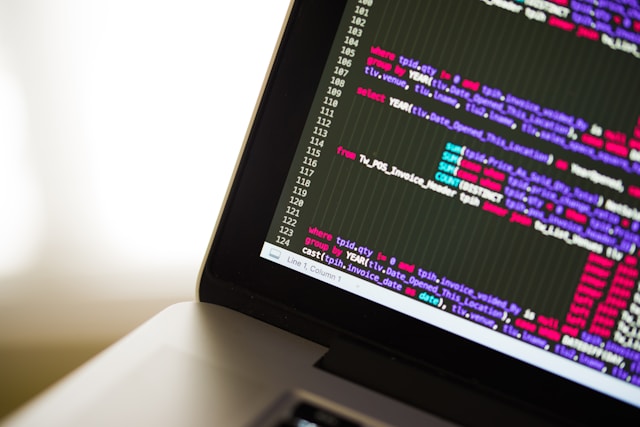Introduction to the Cyber Security Revolution
Welcome to the Cyber Security revolution. In today’s digital landscape, the stakes have never been higher. As technology continues to evolve at a rapid pace, so do the threats that come with it. Staying up to date with the latest cyber security trends has become more important than ever before.
The cyber security revolution is driven by the need to protect our digital assets from these ever-evolving threats. As we become more dependent on technology, the importance of staying ahead of the curve in cyber security cannot be overstated.
This article will provide you with an in-depth understanding of the current and future cyber security trends. By staying informed, you can better protect your business and personal information from potential cyber attacks. Let’s embark on this journey together and uncover the cyber security trends that will shape the digital landscape in 2023 and beyond.
The Importance of Staying Updated with Cyber Security Trends
In an age where technology and connectivity are advancing at a rapid pace, it’s crucial to stay updated with the latest cyber security trends. New vulnerabilities and attack vectors are discovered every day, making it essential for businesses and individuals to remain vigilant and proactive in their approach to cyber security.
Staying updated with the latest cyber security trends allows you to make informed decisions about your security posture, identify potential risks, and formulate effective strategies to mitigate those risks. Moreover, being aware of emerging trends and technologies can help you stay ahead of cyber criminals, who are always looking for new ways to exploit vulnerabilities and compromise systems.
By understanding the current and future landscape of cyber security, you can be better prepared to protect your digital assets and ensure the security and privacy of your personal and business data. This is especially important as the costs associated with cyber attacks continue to rise, both in terms of financial losses and reputational damage.
Top 10 Cyber Security Threats in 2023
As we look towards 2023, it is essential to be aware of the top cyber security threats that we may face. Here are the top 10 cyber security threats to look out for in 2023:
- Ransomware attacks: Ransomware will continue to be a major threat, with cyber criminals targeting businesses, government agencies, and individuals alike. The rise of ransomware-as-a-service platforms will make it even easier for criminals to launch attacks.
- Supply chain attacks: These attacks, where cyber criminals target a company’s suppliers and vendors to gain access to their systems, will become more prevalent as businesses become increasingly interconnected.
- Deepfakes: Deepfakes, or AI-generated fake videos and images, will be used to spread disinformation and manipulate public opinion, posing a significant challenge to organisations and individuals alike.
- IoT security vulnerabilities: As the Internet of Things (IoT) continues to expand, so will the potential attack surface for cyber criminals. Ensuring the security of IoT devices will be a top priority for businesses and individuals.
- Nation-state cyber attacks: State-sponsored cyber attacks will continue to escalate, targeting critical infrastructure, businesses, and government institutions.
- Insider threats: Malicious insiders, whether disgruntled employees or infiltrators, will continue to pose a significant risk to organisations, as they have direct access to sensitive information and systems.
- Phishing attacks: Phishing attacks will continue to evolve, with cyber criminals using more sophisticated tactics to trick users into revealing sensitive information or downloading malicious attachments.
- Cloud security threats: As more businesses move their operations to the cloud, cyber criminals will target cloud infrastructure and applications to gain access to sensitive data and systems.
- 5G network security risks: The rollout of 5G networks will introduce new security risks, as cyber criminals look to exploit vulnerabilities in the new technology.
- AI-driven cyber attacks: Cyber criminals will increasingly leverage artificial intelligence (AI) and machine learning (ML) to automate their attacks and evade detection.
AI and Machine Learning in Cyber Security
Artificial intelligence (AI) and Machine learning (ML) have emerged as powerful tools in the fight against cyber threats. These technologies have the potential to revolutionise the cyber security industry, providing businesses and security professionals with new ways to detect, analyse, and respond to threats.
One of the most significant advantages of AI and ML in cyber security is their ability to analyse vast amounts of data at incredible speeds. This enables security systems to identify patterns and anomalies that may indicate a cyber attack or security breach. As a result, AI and ML can help organisations detect threats in real-time, allowing them to respond more quickly and effectively.
AI and ML can also be used to automate routine cyber security tasks, freeing up security professionals to focus on more complex and strategic issues. This can improve overall security posture and reduce the risk of human error, which is often a contributing factor in security breaches.
However, there are also concerns about the potential for AI and ML to be used maliciously by cyber criminals. As AI and ML technologies become more widely available, there is a risk that they could be used to develop more sophisticated malware and cyber attacks. As such, it is essential for organisations to stay informed about the latest developments in AI and ML and to invest in their own AI-driven security solutions to stay ahead of potential threats.
Zero Trust Security Models
The Zero Trust security model is a paradigm shift in the way organisations approach cyber security. In a traditional security model, organisations operate under the assumption that their internal networks are secure and that any threats come from outside the network perimeter. However, the increasing number of high-profile data breaches and insider threats has shown that this assumption is no longer valid.
The Zero Trust model operates under the principle of “never trust, always verify.” This means that every user, device, and network connection is treated as a potential threat, regardless of whether they are inside or outside the organisation’s network. Access to sensitive data and systems is granted only after the user or device has been thoroughly authenticated and their level of access is continually monitored and adjusted based on their behaviour.
Implementing a Zero Trust security model requires organisations to invest in advanced security technologies, such as multi-factor authentication (MFA), network segmentation, and encryption. Additionally, organisations must adopt a more proactive approach to security, continuously monitoring and analysing user behaviour to identify potential threats.
Adopting a Zero Trust security model can significantly improve an organisation’s overall security posture, reducing the risk of data breaches and cyber attacks. As the cyber security landscape continues to evolve, it is likely that Zero Trust will become the new industry standard for securing digital assets.
Cloud Security Advancements
As more businesses migrate their operations to the cloud, ensuring the security of cloud infrastructure and applications has become a top priority. Cloud security advancements have made it possible for organisations to reap the benefits of cloud computing while maintaining a robust security posture.
One of the most significant advancements in cloud security is the emergence of cloud-native security solutions. These solutions are designed specifically for the unique security challenges of cloud environments, providing businesses with the tools they need to protect their data and applications in the cloud.
Another important advancement in cloud security is the growing adoption of the Shared Responsibility Model. Under this model, cloud service providers (CSPs) are responsible for securing the underlying infrastructure, while customers are responsible for securing their data and applications. This model has helped to clarify the division of security responsibilities between CSPs and customers, ensuring that all aspects of cloud security are adequately addressed.
As cloud technology continues to evolve, we can expect to see further advancements in cloud security, such as the integration of AI and ML to detect and respond to threats more effectively. Staying informed about these advancements is essential for businesses looking to maintain a secure cloud environment.
Mobile Security Trends
Mobile devices have become an integral part of our personal and professional lives, making them prime targets for cyber criminals. As mobile technology continues to advance, so do the threats that come with it. Here are some of the mobile security trends to watch in 2023:
- Mobile malware: As mobile devices become more powerful and versatile, they also become more attractive targets for cyber criminals. Mobile malware, including ransomware and Trojans, will continue to evolve and pose a significant threat to mobile users.
- Mobile phishing attacks: Phishing attacks targeting mobile devices will become more sophisticated, exploiting the unique features and functionalities of mobile devices to trick users into revealing sensitive information or downloading malicious apps.
- Mobile app security: As mobile app usage continues to grow, ensuring the security of these apps will become increasingly important. Mobile app developers will need to adopt more stringent security practices to protect user data and privacy.
- Mobile device management (MDM): Businesses will increasingly rely on MDM solutions to secure and manage their employees’ mobile devices, ensuring that corporate data remains protected even when accessed from personal devices.
- 5G security: As the rollout of 5G networks continues, ensuring the security of these networks and the devices connected to them will be a top priority. This will include addressing potential vulnerabilities in the 5G infrastructure and implementing robust security protocols for connected devices.
New and Emerging Trends in Cyber Security for 2023 and Beyond.
As we look ahead to 2023, several emerging trends are poised to shape the future of cyber security. Some of these trends include:
- Quantum computing: The advent of quantum computing has the potential to revolutionise cryptography, with the ability to break traditional encryption algorithms. Organisations will need to adapt their security strategies to account for this new technology.
- Cyber security skills gap: The demand for skilled cyber security professionals will continue to outpace supply, leading to a growing skills gap. Organisations will need to invest in workforce development and explore new ways to attract and retain top talent
- Privacy-focused legislation: As concerns over data privacy continue to grow, we can expect to see more stringent privacy-focused legislation, such as the European Union’s General Data Protection Regulation (GDPR), enacted around the world. Organisations will need to ensure they are compliant with these new regulations to avoid hefty fines and reputational damage.
- Cyber insurance: As the costs associated with cyber attacks continue to rise, businesses will increasingly turn to cyber insurance to mitigate their financial risks. The cyber insurance market is expected to grow rapidly in the coming years, providing organisations with new options for risk management.
- Decentralised security solutions: Decentralised security solutions, such as blockchain-based identity and access management systems, will become more prevalent as organisations look for ways to improve security and reduce reliance on centralised systems.
Defending the Digital Frontier: Key Network Security Developments in 2023
As the digital landscape continues to evolve, so too do the threats to network security. Here are some of the network security trends shaping the digital landscape in 2023:
- Software-defined networking (SDN): SDN allows organisations to centrally manage and control their network infrastructure, improving security and reducing the risk of unauthorised access.
- Network segmentation: The practice of dividing a network into smaller segments, each with its own security policies and controls, will become increasingly popular as businesses look for ways to limit the potential impact of a security breach.
- Next-generation firewalls (NGFWs): NGFWs combine traditional firewall capabilities with advanced security features, such as intrusion prevention and application control, providing businesses with a more comprehensive approach to network security.
- Network access control (NAC): NAC solutions allow organisations to enforce security policies for devices accessing their networks, ensuring that only authorised devices are allowed to connect.
- Network traffic analysis (NTA): NTA solutions use machine learning and AI to analyse network traffic, identifying potential threats in real-time and allowing businesses to respond quickly and effectively to security incidents.
As the digital landscape continues to expand, network security will remain a top priority for businesses of all sizes. By staying informed about the latest network security trends and investing in advanced security solutions, organisations can better protect their networks and digital assets from potential threats.
Fortifying Your Business: Crucial Data Security Trends to Watch in 2023
Data security is a critical component of any cyber security strategy, as businesses increasingly rely on data to operate and make informed decisions. Here are some of the data security trends that will impact businesses in 2023:
- Data encryption: Encryption is a fundamental component of data security, and businesses will continue to adopt encryption technologies to protect their sensitive data from unauthorised access.
- Data loss prevention (DLP): DLP solutions help businesses prevent the accidental or intentional loss of sensitive data. These solutions will become more critical as businesses face stricter data privacy regulations and higher penalties for data breaches.
- Data classification: Classifying data based on its sensitivity level allows businesses to implement appropriate security controls and policies to protect it. Data classification will become more important as businesses collect and store more data.
- Cloud data security: As more businesses move their data to the cloud, cloud data security will become increasingly important. Cloud-native security solutions and the Shared Responsibility Model will play a crucial role in securing cloud data.
- Data governance: Data governance frameworks help businesses manage their data throughout its lifecycle, ensuring that it is collected, processed, and stored in compliance with relevant regulations and standards.
By adopting these and other data security trends, businesses can better protect their data from potential threats, maintain compliance with relevant regulations, and build trust with their customers.
Safeguarding Your Digital Assets: Top InfoSec Trends and Strategies for 2023
Information security is the practice of protecting information from unauthorised access, use, disclosure, disruption, modification, or destruction. Here are some of the information security trends and best practices to consider in 2023:
- Multi-factor authentication (MFA): MFA adds an extra layer of security to authentication processes, making it more difficult for cyber criminals to gain access to systems and data.
- Incident response planning: Incident response planning allows businesses to respond quickly and effectively to security incidents, minimising the impact of a cyber attack.
- Security awareness training: Educating employees about good security practices is essential for building a strong security culture within an organisation.
- Vulnerability management: Vulnerability management involves identifying, prioritising, and addressing security vulnerabilities before they can be exploited by cyber criminals.
- Penetration testing: Penetration testing involves testing an organisation’s security defences by simulating a cyber attack. This allows businesses to identify weaknesses in their security posture and address them before they can be exploited.
By adopting these and other information security trends and best practices, businesses can build a more robust and effective security posture, protecting their systems and data from potential threats.
The Future of Cyber Security: Predictions and Challenges
As we look towards the future of cyber security, there are both predictions and challenges to consider. Here are some of the predictions for the future of cyber security:
- AI and ML will continue to play an increasingly important role in cyber security, both in terms of defending against cyber attacks and developing new attack vectors.
- The proliferation of IoT devices will create new security challenges, as cyber criminals look to exploit vulnerabilities in these devices to gain access to corporate networks and data.
- The growing adoption of cloud computing will require businesses to invest in robust cloud security solutions to protect their data and applications.
- The skills gap in the cyber security industry will continue to be a significant challenge, as businesses struggle to find and retain skilled professionals.
- Cyber security regulations and standards will become more stringent, as governments and regulatory bodies seek to protect personal and business data from potential breaches.
Businesses must be proactive in their approach to security, investing in advanced solutions and adopting best practices to protect their digital assets.
Embracing the Cyber security Revolution for a Secure Digital Future
In conclusion, as we navigate the ever-changing landscape of cyber space and face the daunting challenges of the digital age, it is crucial for businesses, organisations, and individuals alike to stay informed about the top cyber security trends of 2023. Implementing proactive measures and adopting cutting-edge technologies are essential to safeguarding our digital assets and ensuring our online interactions remain secure.
Enter Nueva, a leading cyber security company based in Australia, uniquely positioned to help you stay ahead of the curve. With their team of experienced professionals, Nueva offers customised solutions tailored to your specific needs, ensuring that your network infrastructure remains resilient and impenetrable. As the world braces for the next wave of cyber threats, Nueva’s expertise in threat detection, prevention, and response will provide you with the peace of mind you deserve.
Make an investment in your organisation’s future by partnering with Nueva to ensure a secure and prosperous digital environment for years to come. Don’t let yourself become another statistic in the world of cyber crime. Take the first step towards fortifying your network security today by reaching out to Nueva’s team of experts.
Ready to safeguard your digital assets and secure your online presence?
Contact us today to schedule a consultation and learn how their comprehensive cyber security solutions can protect you from the ever-evolving threats of tomorrow.







